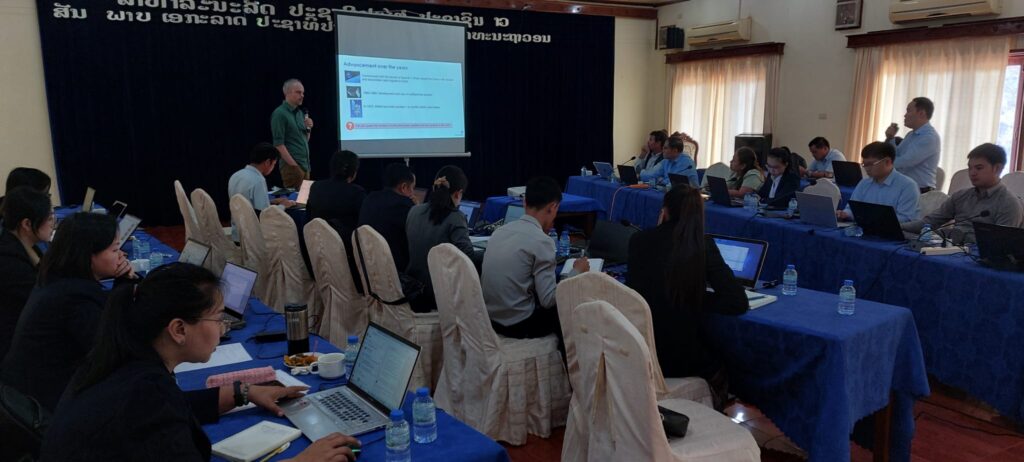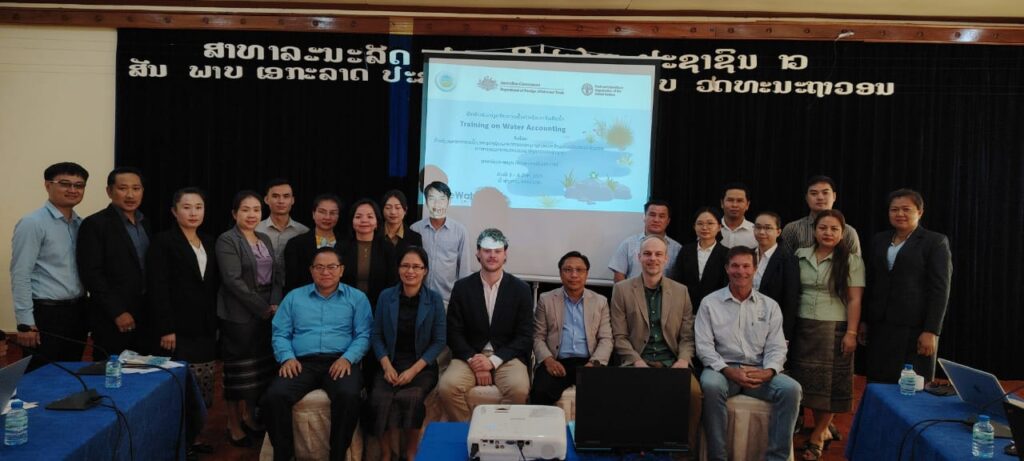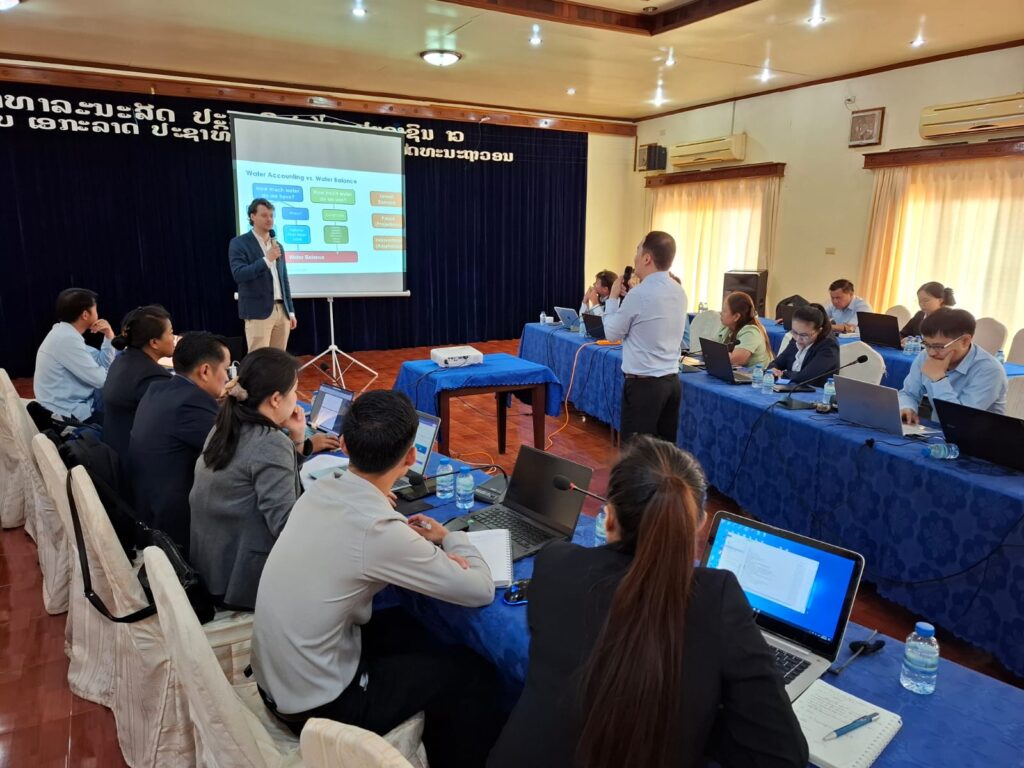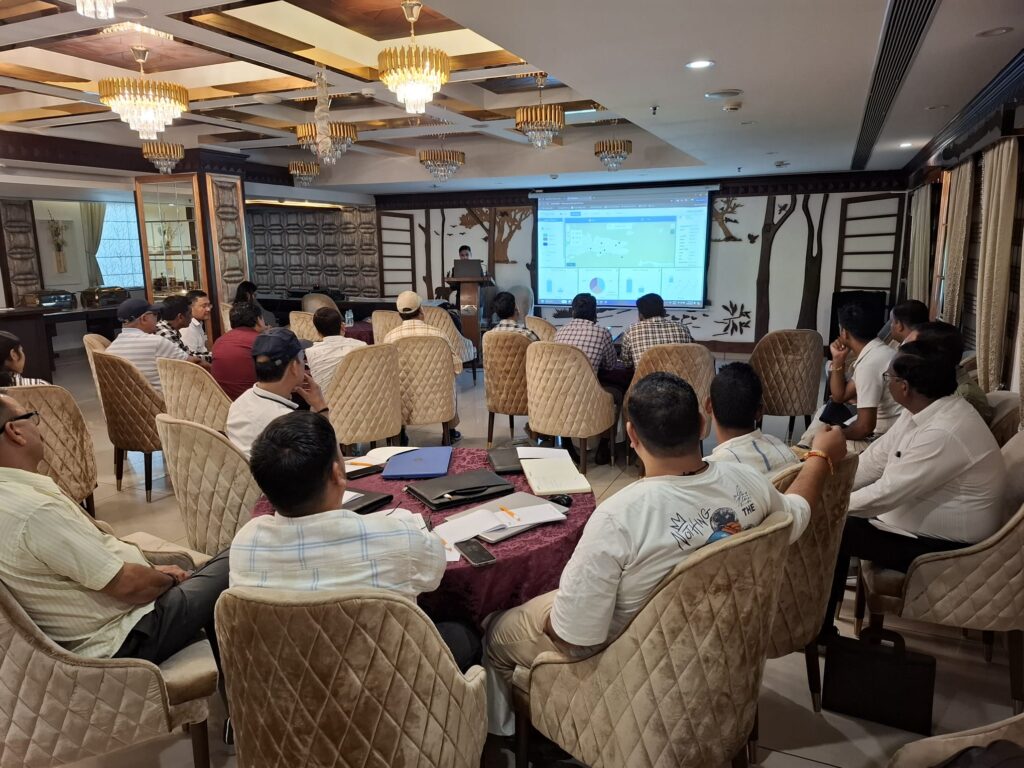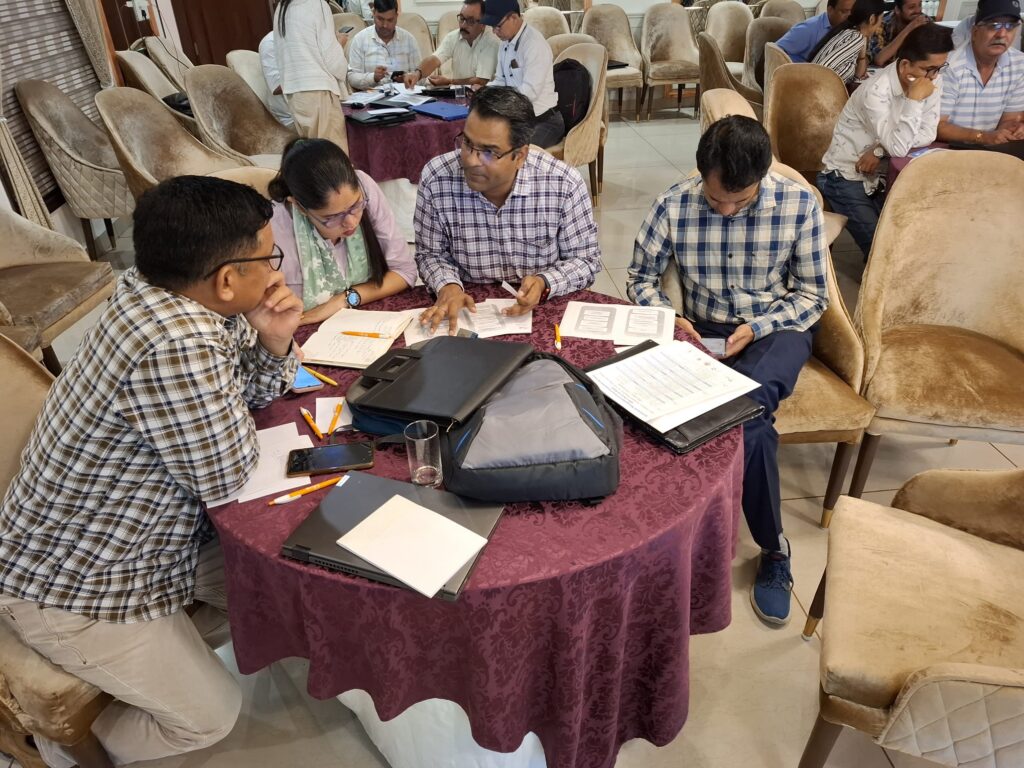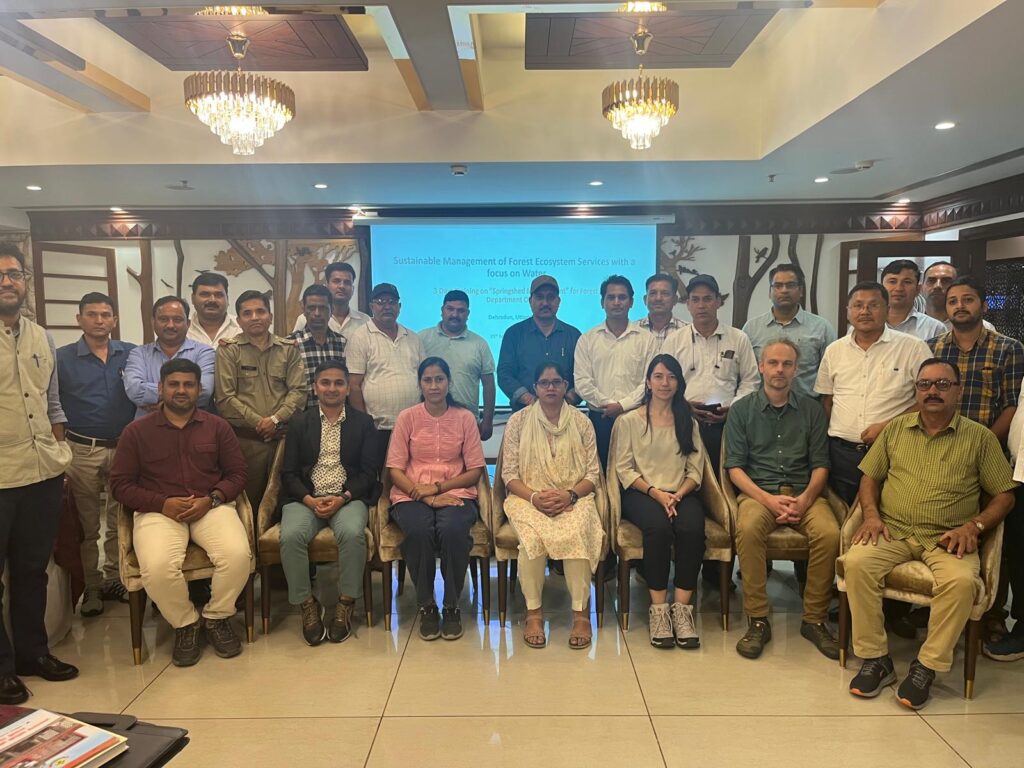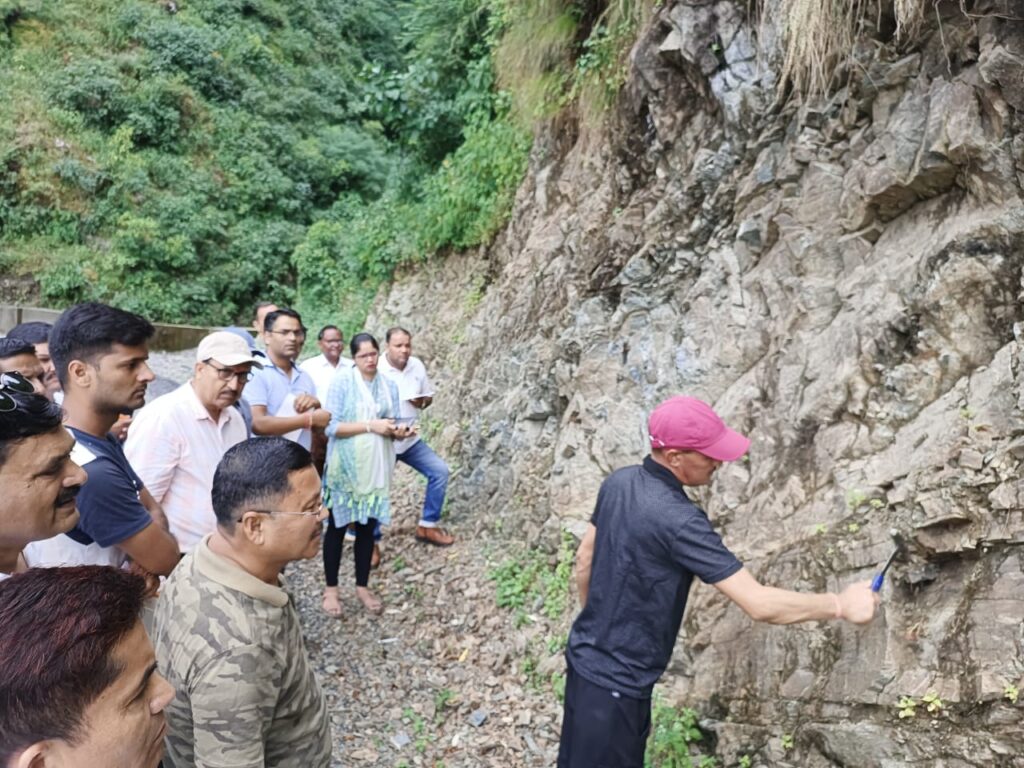Begin maart 2025 vond de tweede fase plaats van de training Water Accounting in het kader van het FAO-programma Waterschaarste. De training richtte zich op het verzamelen en analyseren van ruimtelijke gegevens om een waterboekhouding op te bouwen en te simuleren. Deelnemers van verschillende overheidsinstellingen werkten met open-source datasets om seizoensgebonden waterbalansen te berekenen en beoordeelden de beschikbaarheid van water en interventies in het Xe Champhone pilot stroomgebied.
Een belangrijk onderdeel van de training was het gebruik van Google Earth Engine (GEE), waar deelnemers leerden hoe ze op afstand gedetecteerde gegevens over neerslag, evapotranspiratie en landgebruik konden extraheren en verwerken. Deze datasets werden gebruikt om de waterberekeningscomponenten te berekenen, waaronder instroom, uitstroom, vraag en onvervulde vraag. In de tweede helft van het programma maakten de deelnemers kennis met het Water Evaluation and Planning (WEAP) model, dat de waterbalans en de dynamiek tussen vraag en aanbod in stroomgebieden en irrigatiesystemen simuleert. Met behulp van een zelfstudiemodel voor het Xe Champhone stroomgebied in de provincie Savannakhet onderzochten de deelnemers hoe ze scenario’s kunnen opstellen en aanpassen om de mogelijke effecten van toekomstige projecties en beleids- of beheersinterventies op de beschikbaarheid, vraag en aanbod van water te beoordelen. Deze oefeningen ondersteunen deelnemers bij het nemen van geïnformeerde, gegevensgestuurde beslissingen.
De deelnemers waren sterk gemotiveerd om water accounting toe te passen in hun dagelijkse werk, en velen toonden interesse in een institutionele follow-up. Hoewel de trainingsoefeningen gericht waren op het stroomgebied van Xe Champhone, zagen de deelnemers het potentieel om water accounting benaderingen breder toe te passen. Dit momentum kan als basis dienen voor het opschalen van de waterinspanningen in de hele Democratische Volksrepubliek Laos.
